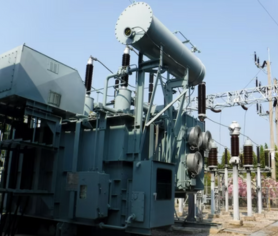
We cannot think of the modern age without access to electricity. From urban centres to even distant villages, electricity is required everywhere, in every home, and in every industry. And this complex electrical infrastructure is incomplete without transformers. Transformers have an important role in the electricity grid, as they ensure a steady and safe flow of electricity. This makes it more than necessary for consumers to be able to identify if the transformers need to be repaired or replaced. While you can always contact your transformer company in Pune for inspections, it doesn’t hurt to have some solid knowledge yourself, which can help you take quicker actions. Like any other mechanical or electrical equipment, transformers can be subject to wear and tear over time, leading to frequent breakdowns and other issues. If you continue to ignore the early warning signs of trouble, it can result in operational disruptions, costly repairs, or even complete transformer failures. So without further ado, let’s find out how to identify these early signs that tell you if your transformer needs repair or replacement!
How to Identify Wear and Tear in Transformers – Common Warning Signs
-
Physical Damage:
Let’s start our discussion with the most straightforward sign of trouble – physical damages. Any form of external damage to the transformer can compromise both its performance levels and safety. You need to keep a keen eye for identifying such wear and tear, like dents, cracks, or corrosion. You should also check for damaged or exposed wirings. What to do to find out such cases? Ensure that the transformer undergoes regular inspection, especially after natural disasters like heavy rains or thunderstorms. Minor damages are repairable but for extensive physical damage, you’ll need to get the damaged transformer replaced. -
Overheating:
Another common sign of your transformer being damaged is overheating. What’s more, this excessive heat can damage the transformer even further. This can especially cause damages to the insulation, reduce the efficiency of the device, and even shorten the lifespan of the transformer. There can be different causes that can result in such overheating. For example, overloading the transformer with excessive demand, poor ventilation, blockage to the cooling systems, faulty internal components – all can lead to transformer overheating. If you notice unusual heat or smell burning insulation, don’t waste any time getting the transformer checked. This is more serious because the device can even catch fire from overheating. -
Oil Leaks:
Most transformers use oil for two different purposes – as an insulator and as a cooling agent. Thus, any visible oil leak is a major concern. This can not only compromise the efficiency of the device, but also lead to overheating (as explained in the previous point). Check for pooling oil around the base of the transformer during inspections. Even stains or discoloration of the external surface can point to oil leaks. If the transformer is leaking oil, chances are it has sustained wear and tear in the gasket or in the tank. -
Voltage Irregularities:
The main function of transformers in any electric grid is to maintain the voltage stability. Thus, if you notice voltage irregularities, it can naturally indicate that the transformer has sustained damage. Internal winding issues, damaged insulation, overloading or imbalanced loads – all can lead to voltage drops or fluctuations. This, however, can be avoided by regular load testing. If the voltage issues persist, contact an experienced technician to investigate the issue further. -
Frequent Tripping or Shutdowns:
Similar to voltage irregularities, frequent power interruptions or tripping of circuit breakers can indicate that your transformer needs to be repaired. Such shutdowns are also caused by overloading or faulty internal wirings or short circuits. -
Deterioration of Insulation:
The insulation inside a transformer degrades over time due to heat, moisture, or aging. If you’re observing reduced dielectric strength, or increased moisture content in the insulating oil, or presence of debris in the oil, it usually indicates that the insulation has deteriorated. You can, in most cases, replace the insulation components to increase the lifespan of the transformer. -
High Energy Bills :
Finally, an aging or deteriorating transformer often functions inefficiently and consumes more power than usual. Naturally, this gets reflected in the energy bills. So if your energy costs are rising without any apparent reason, chances are that the transformer needs repairs or replacement.
Conclusion
Well, so these were the most common indicators of any damages sustained by your transformer and you should look for repairs and replacements if you encounter any of these situations. Hopefully, our guide was successful in helping you understand your transformer a little better. If you can’t take a decision by yourself, you can always consult the transformer company and get expert opinion on the condition of the device.